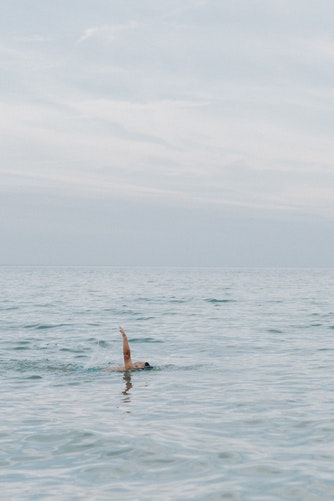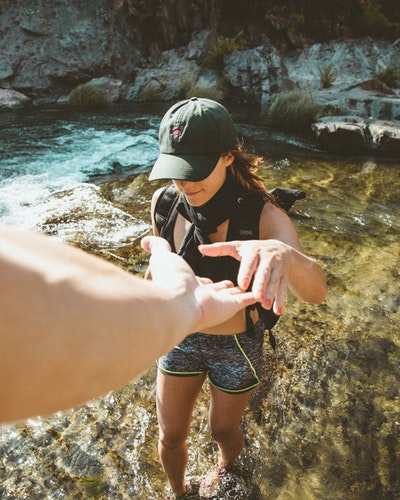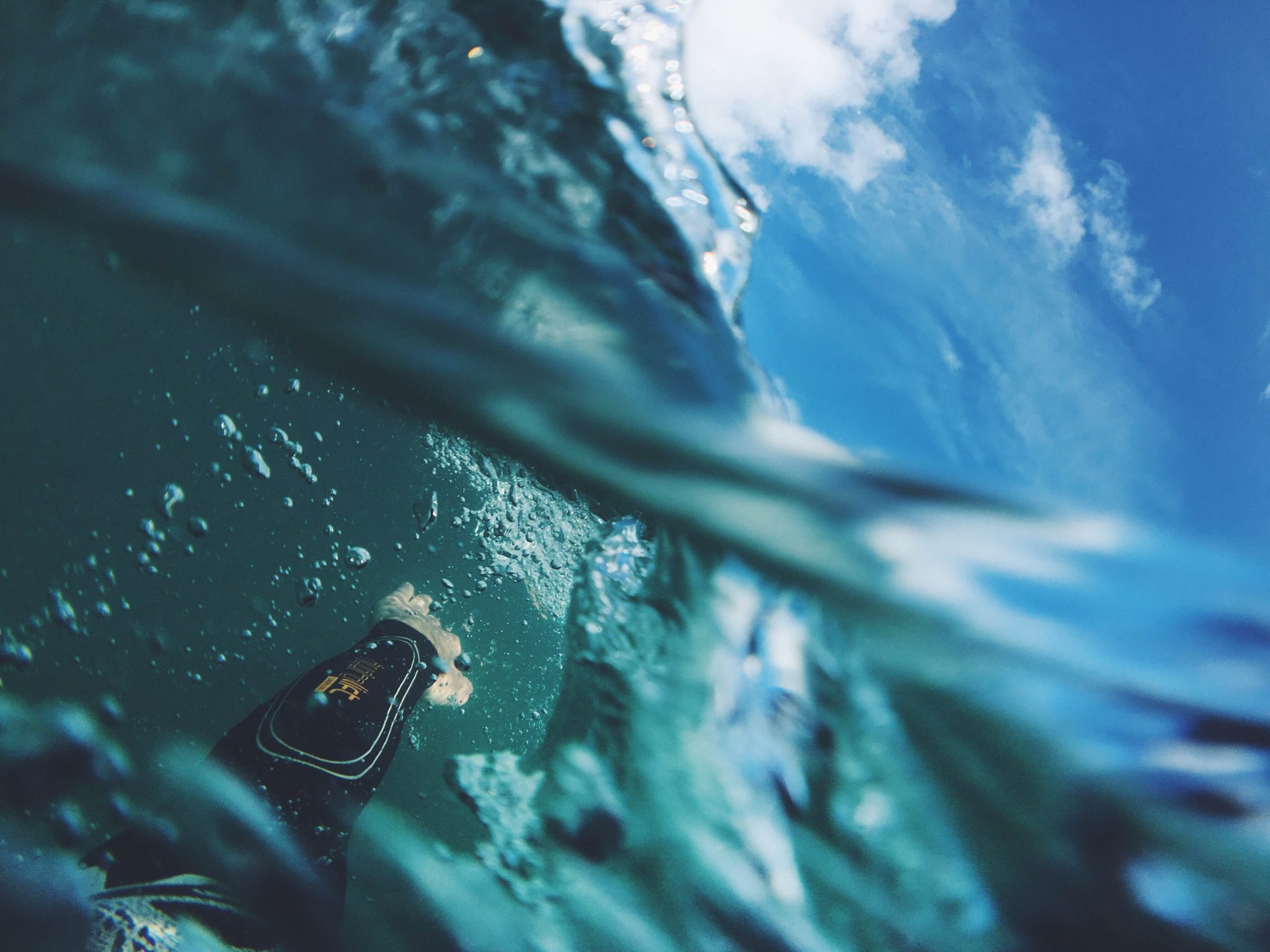Alaskaman Extreme Triathlon – Swim 2.6 miles, Bike 113 miles with 4,635 feet of elevation gain, Run 27.5 miles with 6,400 feet of elevation gain.
Why do triathletes choose to race in the Alaskaman Extreme Triathlon? As I set out writing this article, I hoped to gain insight into the lives of the triathletes who compete in ultra-distance triathlons. I watch Ironman competitions. The joy that many Ironmen express as they cross the finish line brings me joy. Why are they joyful after they endured great pain?
To satisfy my curiosity, I have researched the course at the Alaskaman ‘Extreme’ Triathlon, interviewed 3 participants, and come to understand why triathletes compete in ultra distance triathlons.
Alaskaman Extreme Triathlon Swim Course Characteristics
The temperature of the glacier melt waters of Resurrection Bay Alaska for the Alaskaman Extreme Triathlon range from 48F – 55F in the summer months. If water temperatures are below 54F, race directors will decide on whether to reduce the distance for the swim or cancel the swim all together. Humpback whales, killer whales, seals, sea lions, and sea otters share the bay.
There are seasonal fish-eating killer whales and rare sighting of mammal-eating killer whales. Full neoprene wet suits, neoprene booties, neoprene swim cap, and a silicon event cap are required for the swim. Wet suits bare a resemblance to the fur and skin of seals, yet there has never been a reported killer whale attack on a person in the wild.
If there are wildlife that might cause harm to swimmers during the course (i.e. Jellyfish) the race directors will delay or even cancel the swim.
The Start of the Swim Course
The start of the Alaskaman Extreme swim course is about 100 meters from the shore entrance. There is a 10 minute window from when athletes may enter the water and the start of the race. It is recommended that these 10 minutes are used to allow one’s body to acclimate to the water temperature. This progression can be viewed in Susie’s Twitter post above.
There is low water visibility in Resurection Bay. The glacier melt and silt mix into a soup of nutrient rich water. This can make visibility underwater as low as one foot. It is recommended that one sight often above water to keep on course.
If participants are having trouble during the swim and need assistance, they need to stay calm and float on their back whilst waving their hand above the water. Rescue workers on kayaks will see the swimmers.
The Finish of the Swim Course
As swimmers finish the course, Alaskaman Triathlon crew members are there to assist. They help participants walk. They help with directing. If a swimmer is so cold that they can’t change out of their wet gear, the crew members can help. There is a lot of assistance at this event.
After reading the safety precautions on the Alaskaman Extreme Triathlon website, I see the concern that is put into making sure that each athlete is properly informed about any dangers. Participants are also given detailed suggestions about what to do to prevent complications during the swim course.
The Coldest Waters They Have Ever Swam
This swim course has its obstacles, but they are obstacles worth enduring, according to those that have done it. Participants I interviewed said its the coldest water they have ever swam in. Most needed help getting out of their swim gear. Usually this was because of not being able to feel certain parts of their body.
I have come to the conclusion that all of the triathletes that I interviewed were able to endure this swim course because of their training and will power. If they were cold, they kept swimming. If they were tired they kept swimming. They just kept swimming. They decided that they were going to get through the entire race and they did whatever it took to get through it.
How Do They Endure?
How does a triathlete go to this length and endure physically, mentally, and emotionally. I can only imagine that when they are going through. The joys and the pain makes it so they can only think about the race. Their worries at the office, the drama in the family or anything else that everyday life tends to occupy…. slips away. They fully live within the moment. With obstacles touching them with every stroke, rotation, and step, it is no wonder that they love this race so much. To travel through a challenge of this magnitude has to be one of the biggest reasons triathletes want to attempt this Goliath feat.
This race requires the grit to do a “normal” Ironman race, plus the ability to handle the elements of cold, altitude, and vast elevation changes. If you have read any of my other articles, you know that I wasn’t a fan of the super distance triathlons. But, the Alaskaman Extreme intrigues me because of the location and landscape that must be contended with to finish this race in one piece.
The Alaskaman Extreme Triathlon website holds a wealth of information about the race. If you want stats, rules, and descriptions of the race in full, then definitely take a look there.
The responses that I have received have helped to change the way I look at these seemingly ‘extreme’ races. And the stories I have heard have been so well described that I want the words from the athletes to be unencumbered.
One of the most amazing responses I have received is from a man named Jason. I hope are as inspired by his story as much as I have been.
What drives you to compete at this type of race?
“When I see a race like this, that has these crazy factors added to these long distances it scares and excites me at the same time. Part of my brain is saying there’s no way we can do this. My other part is yelling this looks awesome, we can do this, where do we sign up? It really excites me to do something that most people look at and say nope, I’d did never wanna do something like that.
I know it’s a cliche but I like showing people you can do anything if you put your mind to it. I’m a normal guy, with a family, work 50 hours a week and get in training during early mornings before work or late evenings. I wasn’t a swimmer ever ( I could swim but was never on a team or anything competitive). Not a cyclist, didn’t even own a road bike until two years ago (had bmx bikes as a kid). Wasn’t a runner, the only time a ran growing up was if the cops were chasing me or when I was in the Marine Corp and they made us run. Now here I am doing these long races.”
How did you train for the Alaskaman Extreme Triathlon?
Program
“I trained the same way I trained for an Ironman. Since it’s only a little longer for each discipline I knew my training program would work perfect. I use TriDot for my training program, which gives all your training set up around your speed assessments.”
The Swim

“Being in San Diego I didn’t get to do much cold water swimming. I got all the cold weather gear for the swim and I’d swim with it on to make sure I was comfortable wearing it. Later, I did go up the Mammoth Mountain for a week in June and swam in the lakes up there testing out the cold gear in the snow fed lakes.
Being told the water temp in those lakes was 40 degrees and I felt good during my swims. After swimming in Alaska there’s no way the water at mammoth was 40!!! Alaska was much colder and the temp averaged around 48 for the race.”
The Bike
“For the bike I just made sure I was biking routes that had a lot of elevation since the bike course for Alaska was around +4600 ft elevation.
The Run

“For my runs I started doing trail runs instead of my normal street runs. Made sure they had a lot of elevation gain and that they were rocky and challenging. I also did the runs with my pack/camelback and packed the mandatory gear in the pack so that my body was use to running with it. I would also drive to the gym and start my run from there.
If my training plan called for a 90 minute run I’d take off with my pack on and run a 45 minute loop, go staring into the gym and get on the stair climber for 30 minutes. Get off the climber and go run the 45 minute loop again and get to the gym and get in the treadmill on the highest incline and do that for 30 minutes. I knew the hardest part of the race would be the run.”
“That’s what I really concentrated on and had to up my training from normal Ironman training. I kept my training to around 10-12 hours a week and probably peaked out at a few weeks of 13-14 hours of training.”
What mental preparation, if any, did you do?
“For mental preparation I watched last years Alaskaman video on YouTube probably about a million times!!! When I was tired and unmotivated to go train. I’d watch that video and imagine it was me. Picturing myself having to be helped into T1 and being so cold that they had to help me change into my biking clothes.
Imagining all the people in the video as me, it was me swimming, biking, running and then crossing that finish line. Having read “The Brave Athlete” helped a lot. I have many parts of the book highlighted and I’d go back and read those sections again. I did this all the way up to the night before the race.”
Did you meet any memorable people?
An Amazing Story
“I met a lot of great people at the race. Triathletes always seem to be the nicest and friendliest people. Meet a great couple getting off the plane in Anchorage. She had an Exterra backpack with Ironman patches on it, so of course it was a 99.9% chance she was there to race. She was, of course and had done last years race. Gave us a few tips as we chatted and waited for are luggage.
She finished a little bit after me but got to see her cross the finish line and congratulate her. Meet a guy from Phoenix on race morning. We sat next to other in wooden rocking chairs on the deck at millers landowning looking out at the water waiting for the swim to start. We talked a little about everything as we sat excitedly and nervously waiting for the race to start.
But the most memorable was meeting Katrina Olichwier. Meet her on the Alaskaman athlete Facebook page. She had put up a post seeing if see was the only person from Wisconsin racing. I commented I was from there originally but now lived in San Diego. Than find out she lived in the same small town where I grew up and that she was friends with friends I went to school with and also find out her mom was my gym teacher I’m grade school. Talk about a small world.
Fast forward to the Thursday of race week. I get a message from her saying she her and her brothers landed in anchorage but the airlines had lost all there luggage (bike, clothes, everything). She said the airlines were trying to find the luggage and hopefully it would be getting there Friday (the day before the race).”
Then This Happened

“Friday comes and no luggage. In the mean time she had put out on Facebook saying something like pray for my luggage to show up so I can race. Well the Tri community being the awesome people they are ended up getting together everything she needed to race ( with all the mandatory gear it was a lot of stuff). The only thing she went and got was a brand new pair of running shoes ( that she ran 27.5 miles in the next day with out ever wearing them).
I told her whatever I can do to help let me know. My hotel was two blocks away from T1 and where the bus’s would shuttle us down to the swim start. She showed up to the hotel around 7:30pm Friday ( T1 was opening around 2:30 am Saturday). She came into the room like a tornado within seconds her stuff was everywhere and we were going through everything getting her ready for the race.
A Helping Hand
My Sherpa was talking to her brothers and letting them know the best places that we had found to stop for refueling on the bike and all other logistics they were going to need, cause they weren’t able to make the race meeting. Her and I were getting the bike ready and gear packed up for when she would need it. Her and her brothers hadn’t showered and looked exhausted. We let them shower and got them ready to race. They left the room around 10:00 and went to sleep in there rented car. They were suppose to camp by the swim start but again zero of there stuff showed up.
There she was the a few hours later ready to race with all borrowed gear at one of the hardest races on the planet. Never once did I hear her say maybe I shouldn’t race. She was going for it no matter what. We finished the swim around the same time. I got out in the bike first but told her great job and I see her on the course. Since her brothers got the stop info from my Sherpa they were there cheering me on, encouraging me and helping out to make my stops faster.
I saw her on the run and was able to let her brothers know where she was as I was getting my Sherpa and starting on the mountain portion. She finished the race, got the orange finishers shirt wearing other people’s gear. If that doesn’t tell you what I strong mind can accomplish, nothing will.”
Did you learn something about yourself at the Alaskaman Extreme Triathlon?

“In my mind I always think I can accomplish whatever is in front of me. Sometimes everything doesn’t go as planned but I’ll always give it my all. I don’t think I learned anything new about myself just reconfirmed what I always try to tell myself. I am a strong person in my mind and my body. There’s only one person that can bring me down and that’s not believing in myself.“
If there was a moment that you felt like giving up, what kept you going?
“I never felt like giving up while racing. Knew I had done all the work leading up to the race and I was as prepared as I could be. I came in telling myself I was going to finish, but was only worried that I’d not make a cut off to get the orange shirt. I planned the race in my head as four separate races. Swim, bike, run, and mountain run.
I had time goals for each of these and I knew if I meet them that when I got to the mountain run I’d make the cut off times and get to do the second loop of the mountain and get the orange shirt. When I got to the mountain portion I was great on time but it was hot and that mountain was steep. My Sherpa just kept saying, how do you eat an elephant? One bite at a time. That’s what we did, hiked the mountain one step at a time.”
What advice do you have for others who want to conquer the Alaskaman Extreme Triathlon?

“My advice to anyone thinking of doing the race is sign up!!! You won’t regret it. Alaska is beautiful and amazing. You won’t be disappointed. As far as training make sure you have a good plan you know and trust. Make sure you are running hilly trails, hiking mountains if possible, stair climber and steep incline on the treadmill.”
“Use hiking poles they were a life saver for me. Wish I trained with them more cause my elbows got tired using them. I wished I trained more on running down the mountain (since you have to run down it twice) it tore my feet up. My toes were smashing the front of my shoes ( I’ve since lost four toes nails from the race). My feet were so sore from going down the first time I was more excited that I got to climb back up because that hurt less.
I was actually faster going up the mountain than coming down ( which makes no sense). If you can stay and enjoy Alaska before and after the race, do it. I unfortunately wasn’t able to get there early or stay afterwards. Really wish I could have explored more of Alaska. I fly in late Wednesday night and fly out on a red eye Sunday night.”
The Conclusion
Amazing, inspiring, and a true example of the triathlete spirit! Thank you so much Jason for contributing the most valuable part of this article. I hope everyone enjoys this documentation of the Alaskman Extreme Triathlon!
If you would like to try another triathlon in the northern half of the US, though not quite as far north as Alaska, the Pleasant Prairie Triathlon.
And as I always offer, if you are interested in a free guided meditation recording specifically tailored to triathletes, please check out the article here.



2 thoughts on “7 Questions Alaskaman Extreme Triathlon”
Comments are closed.